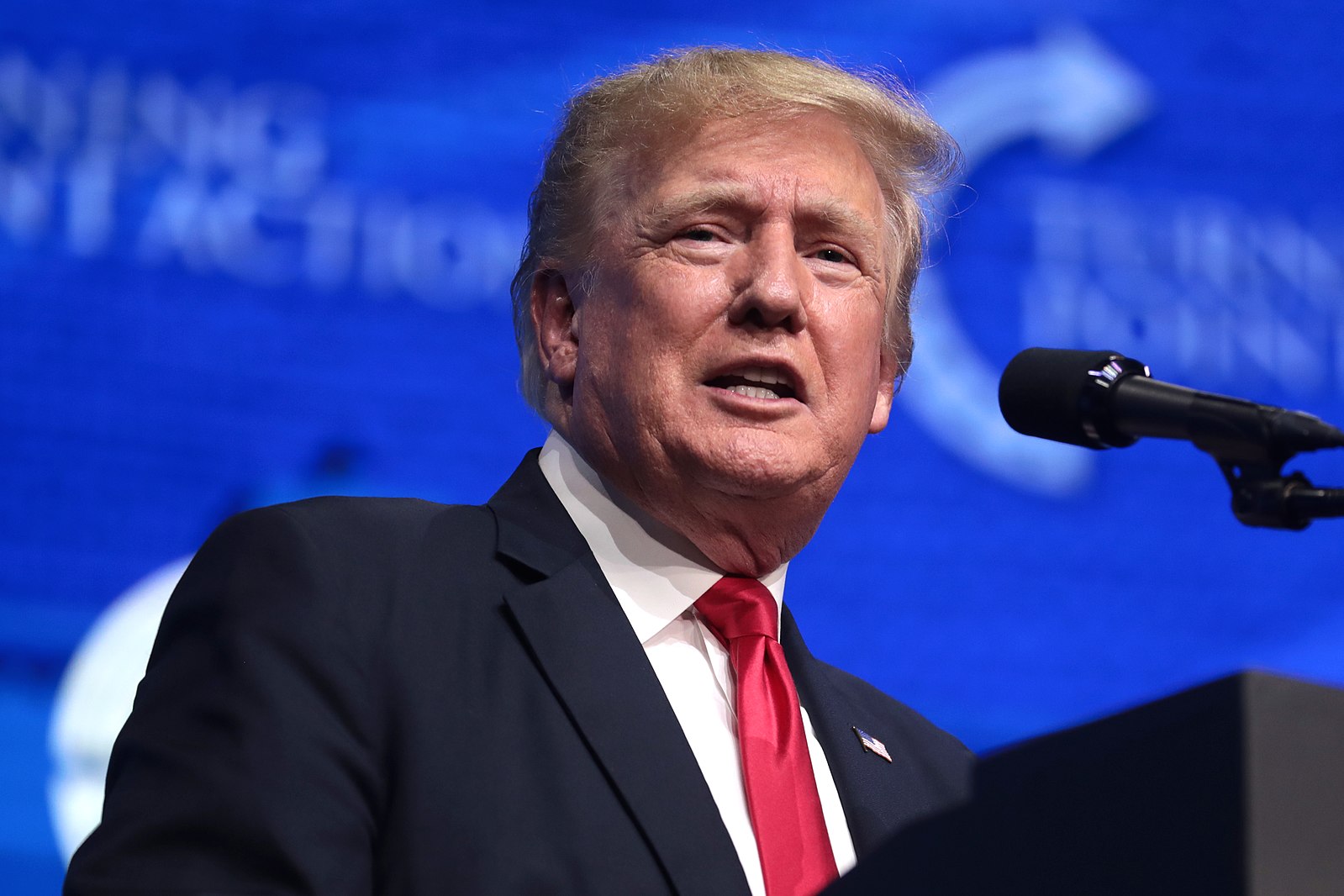
After a year of catastrophic weather on his own doorstep, would 2017 finally be the year the world’s most high-profile climate change sceptic had a change of heart?
Not judging by the end-of-year social media retort below, which President Trump fired off as the eastern seaboard in the U.S. was gripped by an icy winter storm.
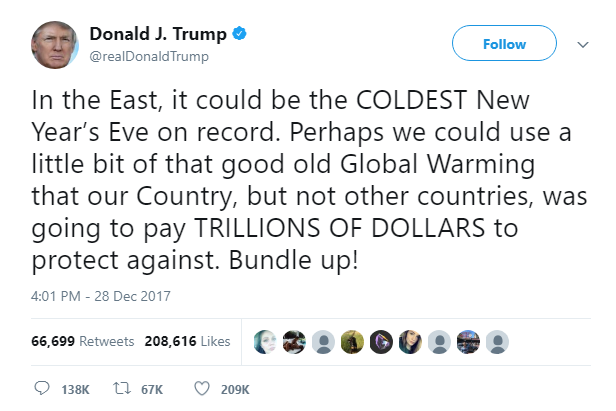
Using a cold snap as an argument against the existence of global warming is nothing new for Mr Trump, who has discharged more than 100 climate denialism missives on Twitter since 2011.
In the years before running for president, he called it “non-existent,” “mythical” and a “a total con job”. Indeed, it seemed that whenever snow fell in Manhattan he’d mock the idea of global warming.
“Global warming has been proven to be a canard repeatedly over and over again,” he wrote on Twitter in 2012. In another post later that same year, he said, “The concept of global warming was created by and for the Chinese in order to make U.S. manufacturing non-competitive.” A year later, he wrote that “global warming is a total, and very expensive, hoax!”
This time, however, was the first occasion he’d tackled the issue head-on as president, and also included an implicit swipe at the Paris climate accord, which Mr Trump has vowed to abandon.
Flawed logic
Climate scientists, however, have long warned against using individual weather events to deliberate the existence, or otherwise, of global warming. Weather, they point out, refers to atmospheric conditions during a short period; climate relates to longer-term weather patterns.
Anthony Leiserowitz, director of Yale University’s project on climate change communication, called Mr Trump’s tweet “scientifically ridiculous and demonstrably false”.
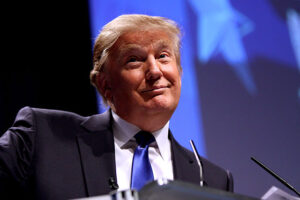
“There is a fundamental difference in scale between what weather is and what climate is,” he said.
“What’s going on in one small corner of the world at a given moment does not reflect what’s going on with the planet.”
David Karoly, a climate scientist from the University of Melbourne, was even more blunt, reports The Guardian.
“It’s winter in the US. Cold temperatures are common in winter.”
Climate modelling showed cold snaps like the one in the US were actually becoming less common as a result of global warming, Mr Karoly said, adding that rapid attribution analysis means scientists are now able to look more closely at “classes of events”.
That type of modelling for the north-east of the US, he said, showed that although there was a great deal of year-to-year variability, the average coldest temperature in December in the region has increased in the past 50 years.
Australian scientists from the Institute of Public Affairs John Abbot and Jennifer Marohasy managed to publish an alternative view for the sceptics in the journal GeoResJ, citing data from six 2,000 year-long proxy temperature series from different geographic regions.
“Proxies” are the markers scientists use – tree rings, sediments, pollen, etc – to try and assess global temperature trends in the days before the existence of thermometers.
All the evidence suggested that the planet was about a degree warmer during the Medieval Warming Period than it is now; and that there is nothing unnatural or unprecedented about late 20th century and early 21st century “climate change”, trumpeted far-right publications Breitbart and The Daily Caller.
But when The Guardian canvassed five genuine climate scientists for their view on the findings, they variously summarised the research as “junk science” and seriously flawed.
Climate change is good for us
Another outspoken climate change denier, former Australian Prime Minister Tony Abbott, also didn’t let established science derail his ‘message’ to the world in 2017.
In an October speech called Daring to Doubt to the Global Warming Policy Foundation in the UK, he likened climate change policy to “primitive people killing goats to appease volcano gods”.
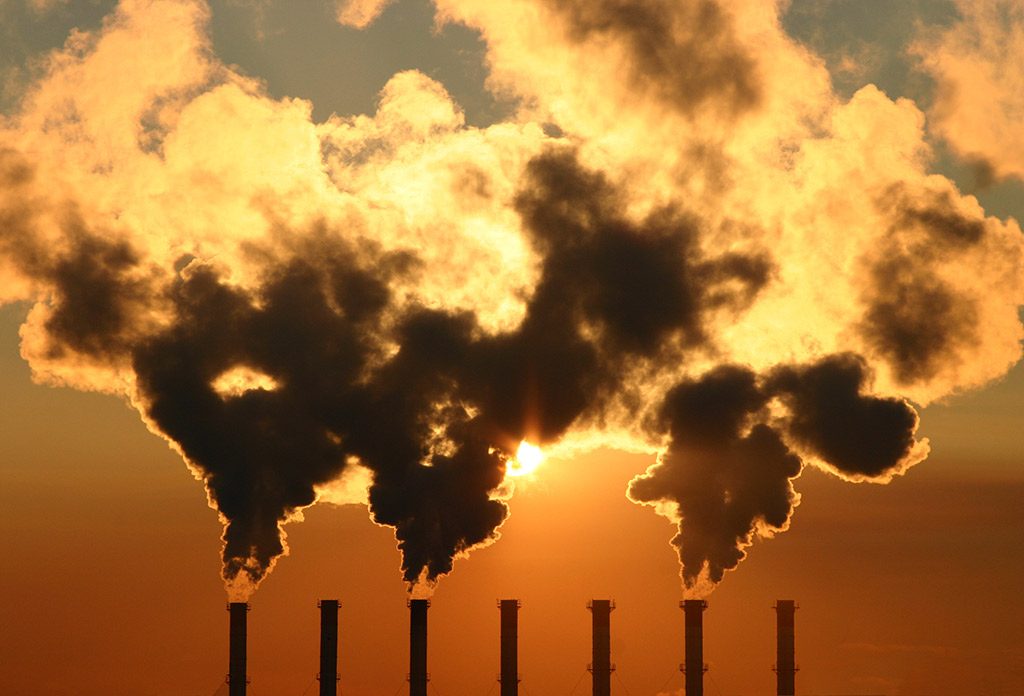
Mr Abbott argued that “at least so far it is climate change policy that is doing harm; climate change itself is probably doing good — or at least more good than harm”.
“In most countries far more people die in cold snaps than in heatwaves, so a gradual lift in global temperatures, especially if it is accompanied by more prosperity and more capacity to adapt to change might even be beneficial.”
Mr Abbott also used the platform to outline his opposition to renewable power by arguing it was possible to have “too much of a good thing”.
“The only rational choice is to put Australian jobs and Australia’s standard of living first; to get emissions down but only as far as we can without putting prices up,” the former prime minister said, arguing anything else would be a “dereliction of duty as well as a political death wish”.
He described the reality of climate change as very modest but the consequences of the policy to deal with it as “increasingly dire”.
That’s not a rhetoric likely to book Mr Abbott any speaking gigs with economic superpower China anytime soon.
So long reviled as a climate change villain, in 2017 China transformed into a green energy colossus.
The world’s top clean energy investor pledged to increase the amount of energy coming from non-fossil fuels to 20% of its total output by 2030.
To that end, China’s energy agency vowed to spend more than $360bn on renewable energy sources, such as solar and wind by 2020, cutting smog levels, carbon emissions and creating 13 million jobs in the process.
Time to act is now
In June, it unveiled one of its early jewels in that masterplan, the world’s biggest floating solar farm off the shores of Huainan, in the central, coal-rich Anhui province, which can generate 40 megawatts of electricity – enough to power 15,000 homes.
More recently, China has also launched the world’s biggest ever mechanism to reduce carbon, in the form of an emissions trading system that will initially cover the country’s heavily polluting power generation plants, then expand to take in most of the economy.
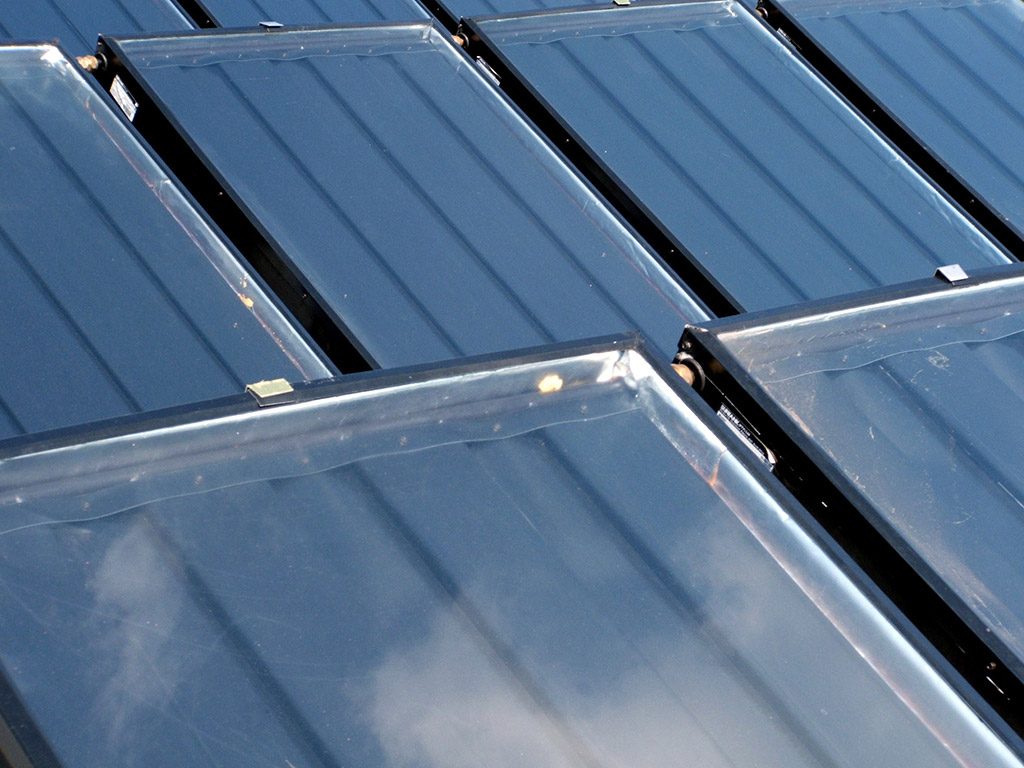
“This is a game-changer,” said Nathaniel Keohane, vice president at the Environmental Defense Fund, a US-based environmental group.
“This shows global leadership on the part of the Chinese government.”
Ironically, the very country whose leader and has routinely scoffed at the notion of mankind causing global warming, was also behind an indirect vindication of China’s stand.
The November-released Climate Science Special Report (CSSR) in the US – the most comprehensive summary of climate science since 2013 – concluded with 95 to 100 per cent certainty that global warming is man-made, mostly from the spewing of carbon dioxide into the atmosphere from the burning of coal, oil and natural gas.
“Over the last century, there are no convincing alternative explanations,” the report said.
In a year that also saw Scott Pruitt, the controversial new head of the Environmental Protection Agency end the US war on coal-fired emissions, one of the father’s of climate science James Hansen concluded that the best way forward was in the courts.
The former Nasa scientist ended 2017 by calling for a fresh wave of lawsuits against governments and fossil fuel companies on what he describes as the growing, mortal threat of global warming.
He tells The Guardian that the litigate-to-mitigate campaign is needed alongside political mobilisation because judges are less likely than politicians to be in the pocket of oil, coal and gas companies.
“We are entering a period of consequences and are in danger of being too late,” he warned.
“I have come to note that greenhouse gas climate forcings are accelerating, not decelerating, and sea-level rise and ocean acidification are accelerating.
“We confront a mortal threat, now endangering the very existence of island and low-lying nations in the Pacific and around the planet. Accordingly, ambition must be increased and enforced.”

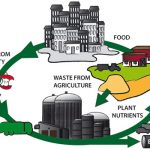

No comment yet, add your voice below!